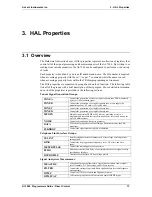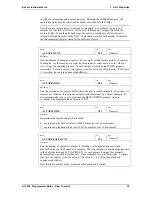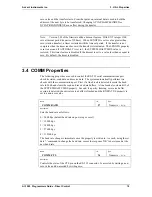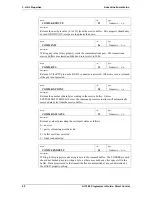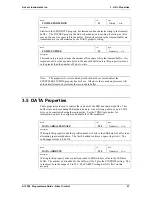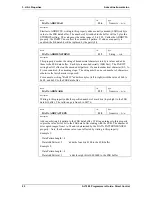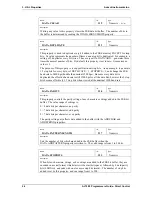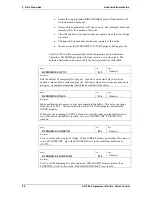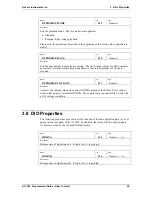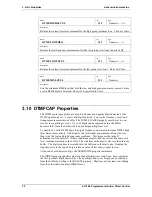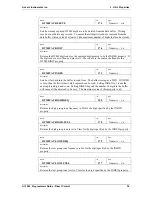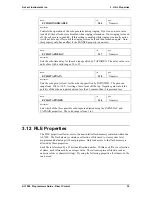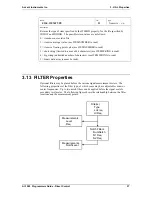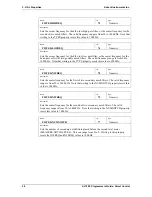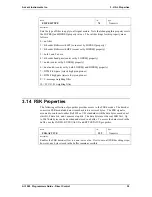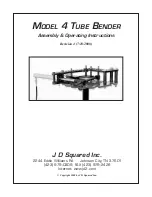
Advent Instruments Inc.
3. HAL Properties
3.7 DCPROFILE Properties
These properties are used to generate complex line voltage profiles. Line voltage sample
points can be stored in a buffer and then played back at a specified rate. The buffer can
hold up to 229376 sample points. This is the same buffer used for recording or playing
AC waveforms (ACCAP properties). As such it is important to prevent conflicts when
using these properties in conjunction with AC or DC signal captures.
The playback rate is adjustable between a range of 1 sample/sec to 5000 samples/sec.
The resolution in sample time is 200 micro-seconds. As such, all playback rates are
rounded to fit the nearest 200 micro-second interval.
To play out samples, set INDEX to the first sample offset into the buffer. Then set
COUNT to a positive value representing the number of samples to output. Alternatively,
set COUNT to a negative value to play out continuously. Once COUNT is written to the
first sample point is read and the line voltage adjusted. The INDEX property increments
and COUNT decrements (if positive) for each sample played out. As long as COUNT is
non-zero, the next sample is output after the time (1/RATE) has elapsed.
During play out, if the INDEX value exceeds LOOPEND, the INDEX value is changed
to LOOPSTART. If INDEX reaches the end of the buffer it automatically resets to zero.
The scaling factor used to convert between the 16 bit samples in the buffer and line
voltage is 1/100. Accordingly, when writing samples into the buffer the desired voltage
must be multiply by 100 in order to calculate the 16 bit sample value.
The play out of samples operates in one of two different modes as set by the MODE
property. They are:
MODE = 0 (standard)
During play out, sample values read from the buffer are used to change both the
TELINT.VOLTAGE and RING.DCLEVEL properties. The valid range for the
samples is -72 to +72 volts. When the polarity of the samples changes (positive
to negative or negative to positive) the telephone interface polarity is toggled).
When the play out of samples stops the line voltage setting and ringing offset
setting are not restored to any prior values. They remain at the last sample read
from the buffer.
Note, if the AI-7280 contains the Extended Line Feed Option (AI-E702) the range of
voltages is increased to +/-105 volts.
MODE = 1 (high voltage / ringing)
This mode configures the AI-7280 to use its high voltage ringing amplifier for
generating the DC voltage profile. This extends the output voltage from -170V
to +80V, which is useful in simulating unusual line voltage profiles that
including ringing.
Please note the following conditions when using this mode.
In this mode, the voltage samples stored in the buffer represent an offset to the
current line voltage setting. The TELINT.VOLTAGE property is not changed
in this mode of operation.
When using this mode, please note the following:
•
The last sample value is always ignored because immediately after
outputting the value and COUNT decrements, the line voltage is
returned to the value prior to starting the play out.
AI-7280 Programmers Guide - Direct Control
27

